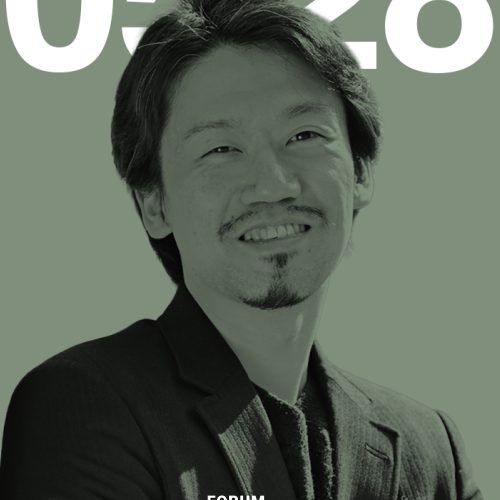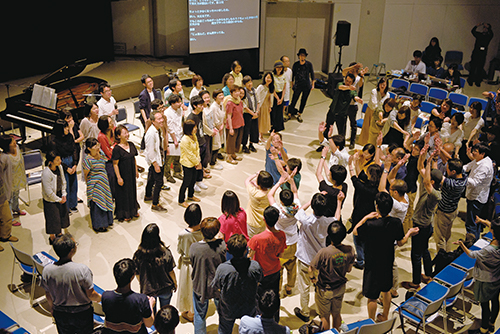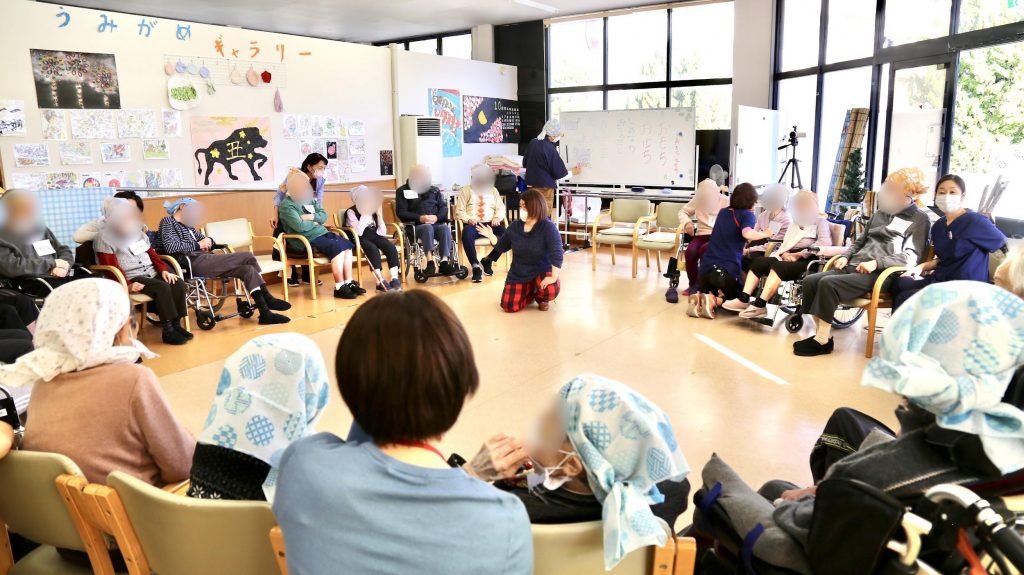
Exploration of cold-tolerant circadian rhythm in cyanobacteria
2025
Graduation Research

We have been informed that the TOEFL iBT test scheduled to be held at the Tenjin Test Center in Fukuoka on or …

Please check the details from the link below.

Faculty of Design, Kyushu University is pleased to present the following researcher talk. Forum for Contempora…

We offer public lectures and lectures for high schools on various design topics to educate the public about th…


In this age, when there is a shift to a sustainable ecosystem and a diverse and prosperous society, there are growing expectations for designers who can solve social issues with out-of-the-box thinking and creativity.
In the Design Futures Course, students will engage in comprehensive studies to grasp the essence of social issues and envision a desirable future. Through a unique curriculum that integrates three fields, Art and Design, Social Futures, and Biology and Information Science, students will learn how to grasp issues from multiple perspectives and derive solutions and cultivate the ability to pioneer a new era.
In the midst of unprecedented changes, this is where you will be challenged to imagine, explore, and realize the future society that you really want to see come true. That is the Design Futures Course.

Develop a vision for the future with rich sensibilities and ideas, and acquire knowledge and skills to realize it

Learn theories and methods for understanding the environment, society, and humankind to envision a desirable future

Learn how to understand natural and social phenomena from a mathematical science perspective and the mechanisms behind the phenomena of life
1 st year

Through KIKAN Education Subjects, students will acquire the following abilities. (1) The ability to identify problems on their own and tackle them creatively and critically. (2) The ability to interchange diverse knowledge and solve problems collaboratively. (3) The ability to communicate and absorb information effectively by interacting with the world at large through expressing themselves in writing, presenting and engaging in discussions. Through Science Discipline Subjects, students will gain an understanding of various concepts in mathematical and information sciences and acquire the intellectual ability to explain natural science and social phenomena based on these theories. In the Design Literacy Subjects, students will learn about specific knowledge, concepts, ideas, and methods of design that serve as the foundation for design.
2 nd year

By taking subjects unique to this course, which consist of the three fields of Art and Design, Social Futures, and Biology and Information Science, students will be able to understand and explain the following.
(1) Theory, philosophy, and history of Art and Design, as well as various expressive techniques and their effects.
(2) Diversity, sustainability and social research methods necessary to envision a desirable future society.
(3) Basic concepts and design methods of algorithms and data structures, important concepts and theories in information science.
(4) Observations and experiments from the perspective of the commonality and diversity of life phenomena and evolution.
3 rd year

Students will be able to participate in cutting-edge design activities in the world by learning specialized fields in English to utilize their skills.
By collecting information on diverse phenomena in nature and society using the scientific method and analyzing it from a mathematical and scientific approach, students will be able to identify the characteristics of these phenomena.
In Design Subjects, students will be able to visualize concepts and design, plan, and implement them in accordance with design methodologies.
In Course Exercises Subjects, students will be able to create new designs that envision the future through the integration and logical assembly of concepts, knowledge, ideas, and methods of the humanities, social sciences, natural sciences, information sciences, and artistic expression, without being bound by existing concepts.
4 th year

In the Senior Projects and Internship Subjects, students will envision a better future with a rich imagination and deep insight and aim to realize it (social implementation) through design and practice.
In the Transdisciplinary subjects, students will be able to discover, propose, and solve complex social issues through collaboration with different disciplines while comprehensively utilizing their specialized knowledge.
| Name | Position | Field of Specialization |
|---|---|---|
| INOUE Shigeki | Professor | Human Centered Design |
| KOGA Toru | Professor | Philosophy, Ethics, Aesthetics,Fundamental Theory of Design |
| KONDO Kayoko | Professor | Environmental Policy, Environmental Economics, History of Social Thought |
| MARUYAMA Osamu | Professor | Computational Biology and Bioinformatics |
| MINATO Takehiko | Professor | Screenplay |
| NAKAMURA Mia | Professor | Cultural Policy, Arts Management, Arts and Care, Art-based Research |
| OGATA Yoshito | Professor | Industrial Design, Product Design, Science of Design, Design Method |
| HIRAMATSU Chihiro | Associate Professor | Visual Psychophysiology |
| INOUE Daisuke | Associate Professor | Biophysics, Micro-Nanotechnology, Material Chemistry |
| ITO Hiroshi | Associate Professor | Chronobiology, Nonlinear Dynamics |
| KURIYAMA Hitoshi | Associate Professor | Contemporary Art |
| MASUDA Nobuhiro | Associate Professor | Aesthetics, Theory of Image, History of Photography |
| NAGATSU Yuichiro | Associate Professor | Art Management |
| TAKITA Masahiro | Associate Professor | Communication design, Community design, Child and family welfare |
| YUKI Madoka | Associate Professor | Theory of Images, History and Theory of Photography, Visual Cultural Studies |
| INAMURA Tokushu | Assistant Professor | Design Engineering |
| LOH Wei Leong | Assistant Professor | Design Education |
| SEKI Motohide | Assistant Professor | Mathematical Biology, Mathematical Sociology, Evolutionary Biology |
| TARA Yoshifumi | Assistant Professor | Material Design, Spatial Design |
| YOKOYA Naho | Assistant Professor | Contemporary Art |